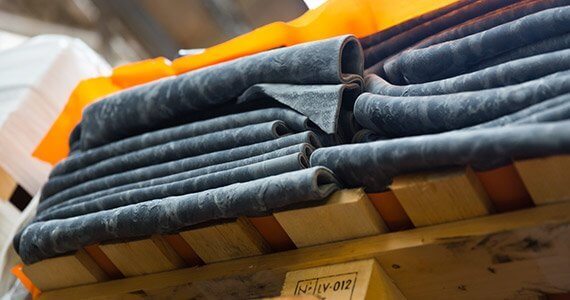Tire cord fabric is a type of industrial fabric which is constructed using High Tenacity yarns in the warp direction and yarns of negligible resistance in weft direction which is used to hold warn yarns locked in their position. Tire cord coated fabrics provides fundamental properties such as controlled deformation, high strength, abrasion resistance, etc. Widely used by the tire industry, it is also employed for the rubber hose manufacture, air springs, expansion joints, among many other applications.
Polyamide is a synthetic fiber formed of linear macromolecules having in the chain the recurring amide functional group. There are polyamides of low affinity and high affinity. They have low flammability, it starts to weaken at 180-200 ° C and melts at about 215-260 ° C. Good elasticity (greater than typical polyester). The polyamide yarn can have the strength of steel and fine wire of the spider. Depending on the weaving, the fabric may exhibit a very close silk appearance. Polyamide fabrics are often in the name of nylon which designated the base polyamide 6-6 whose current usage returns to generically polyamides.
Ethlylene Propylene Diene Monomer is a copolymer of ethylene and propylene and a smaller amount of a diene monomer which forms chemically unsaturated ethylene groups pendant from the main saturated chain. These facilitate cross-linking reactions which do not affect the integrity of the polymer backbone. This feature gives EPDM excellent heat, ozone and chemical resistance. Physical properties are very good and resistance to polar fluids is generally good. Low temperature resistance is very good and EPDM can be compounded to give excellent electrical resistance.

 Heat resistant
Heat resistant Fireproofed
Fireproofed Acids resistance
Acids resistance Non-skid
Non-skid UV resistance
UV resistance Water storage
Water storage Ozone Resistance
Ozone Resistance Isolation to radiation
Isolation to radiation
